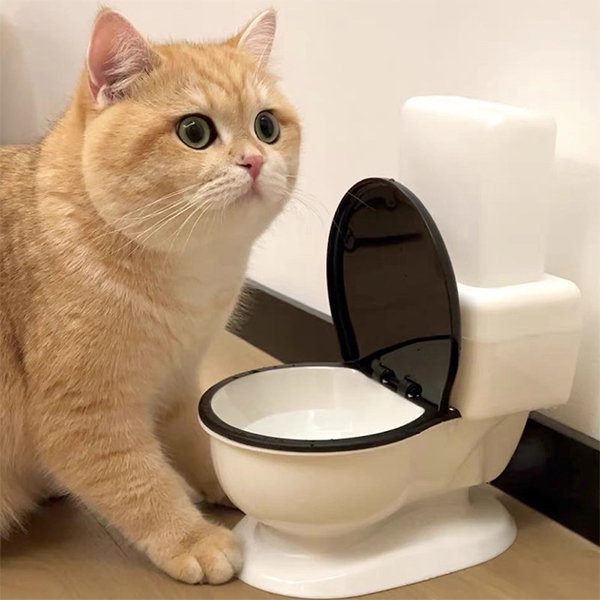What are your thoughts about How to Dispose of Cat Poop and Litter Without Plastic Bags?

Introduction
As cat proprietors, it's essential to bear in mind how we dispose of our feline close friends' waste. While it may seem convenient to purge pet cat poop down the commode, this practice can have damaging consequences for both the setting and human wellness.
Environmental Impact
Purging feline poop presents harmful microorganisms and bloodsuckers into the supply of water, positioning a significant risk to aquatic communities. These contaminants can adversely affect aquatic life and compromise water high quality.
Health and wellness Risks
Along with ecological problems, flushing cat waste can likewise position health threats to human beings. Pet cat feces may contain Toxoplasma gondii, a bloodsucker that can trigger toxoplasmosis-- a potentially extreme disease, especially for expectant ladies and people with damaged immune systems.
Alternatives to Flushing
Luckily, there are more secure and extra accountable ways to deal with cat poop. Think about the following choices:
1. Scoop and Dispose in Trash
The most common method of dealing with feline poop is to scoop it into a naturally degradable bag and toss it in the garbage. Be sure to use a specialized clutter scoop and throw away the waste without delay.
2. Usage Biodegradable Litter
Opt for eco-friendly cat clutter made from products such as corn or wheat. These litters are environmentally friendly and can be safely disposed of in the garbage.
3. Hide in the Yard
If you have a lawn, consider burying feline waste in an assigned location far from veggie yards and water resources. Make sure to dig deep adequate to prevent contamination of groundwater.
4. Set Up a Pet Waste Disposal System
Purchase an animal waste disposal system especially designed for feline waste. These systems make use of enzymes to break down the waste, minimizing smell and ecological impact.
Final thought
Accountable pet dog ownership expands beyond providing food and sanctuary-- it likewise entails correct waste monitoring. By avoiding purging feline poop down the commode and choosing alternate disposal techniques, we can lessen our environmental footprint and shield human health.
Why Can’t I Flush Cat Poop?
It Spreads a Parasite
Cats are frequently infected with a parasite called toxoplasma gondii. The parasite causes an infection called toxoplasmosis. It is usually harmless to cats. The parasite only uses cat poop as a host for its eggs. Otherwise, the cat’s immune system usually keeps the infection at low enough levels to maintain its own health. But it does not stop the develop of eggs. These eggs are tiny and surprisingly tough. They may survive for a year before they begin to grow. But that’s the problem.
Our wastewater system is not designed to deal with toxoplasmosis eggs. Instead, most eggs will flush from your toilet into sewers and wastewater management plants. After the sewage is treated for many other harmful things in it, it is typically released into local rivers, lakes, or oceans. Here, the toxoplasmosis eggs can find new hosts, including starfish, crabs, otters, and many other wildlife. For many, this is a significant risk to their health. Toxoplasmosis can also end up infecting water sources that are important for agriculture, which means our deer, pigs, and sheep can get infected too.
Is There Risk to Humans?
There can be a risk to human life from flushing cat poop down the toilet. If you do so, the parasites from your cat’s poop can end up in shellfish, game animals, or livestock. If this meat is then served raw or undercooked, the people who eat it can get sick.
In fact, according to the CDC, 40 million people in the United States are infected with toxoplasma gondii. They get it from exposure to infected seafood, or from some kind of cat poop contamination, like drinking from a stream that is contaminated or touching anything that has come into contact with cat poop. That includes just cleaning a cat litter box.
Most people who get infected with these parasites will not develop any symptoms. However, for pregnant women or for those with compromised immune systems, the parasite can cause severe health problems.
How to Handle Cat Poop
The best way to handle cat poop is actually to clean the box more often. The eggs that the parasite sheds will not become active until one to five days after the cat poops. That means that if you clean daily, you’re much less likely to come into direct contact with infectious eggs.
That said, always dispose of cat poop in the garbage and not down the toilet. Wash your hands before and after you clean the litter box, and bring the bag of poop right outside to your garbage bins.
https://trenchlesssolutionsusa.com/why-cant-i-flush-cat-poop/

We hope you enjoyed our topic about Can You Flush Cat Poop Down The Toilet?. Thank you for spending some time to browse our article. Those who liked our page if you please remember to pass it around. I treasure reading our article about How to Dispose of Cat Poop and Litter Without Plastic Bags.
Rates